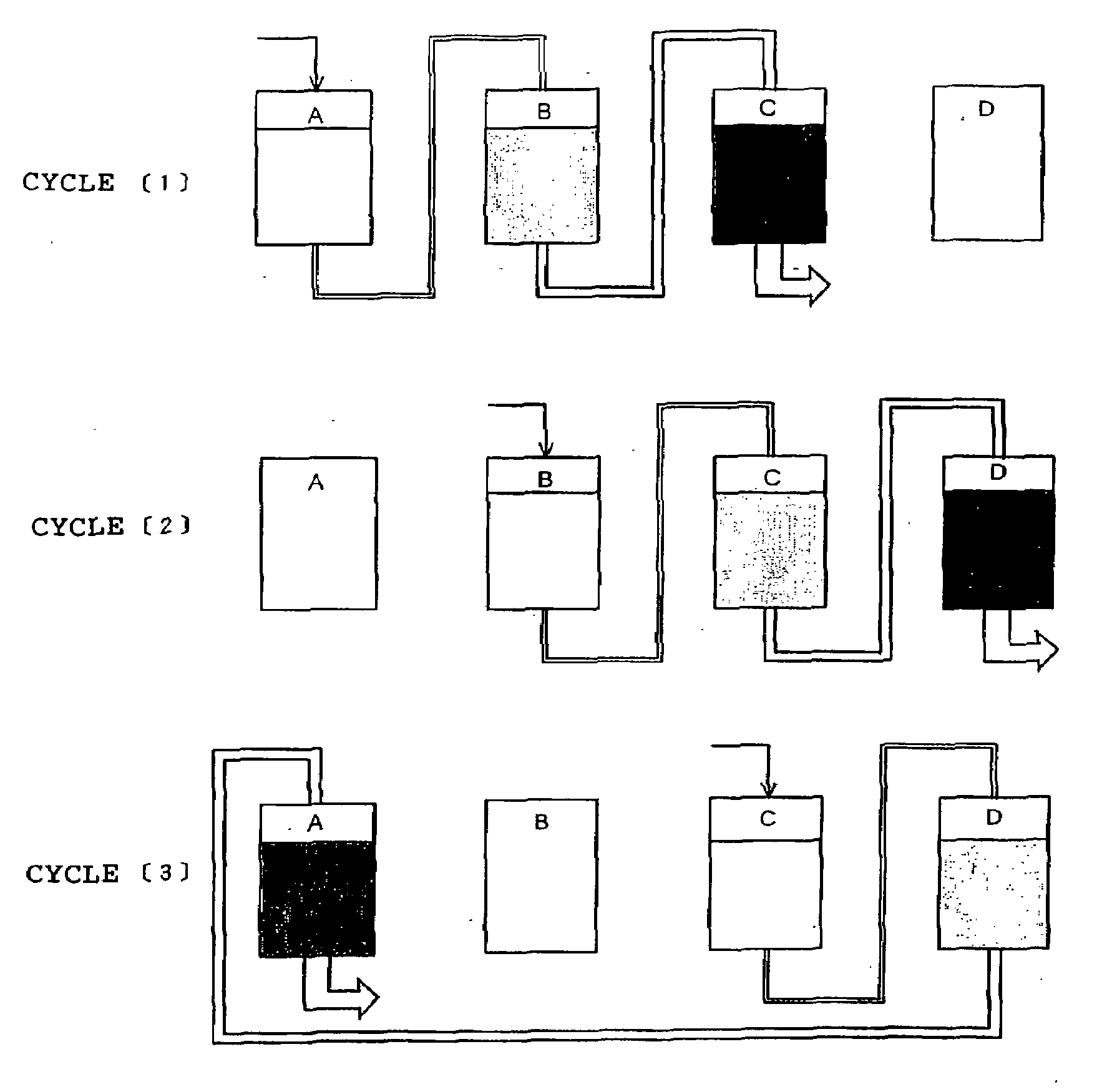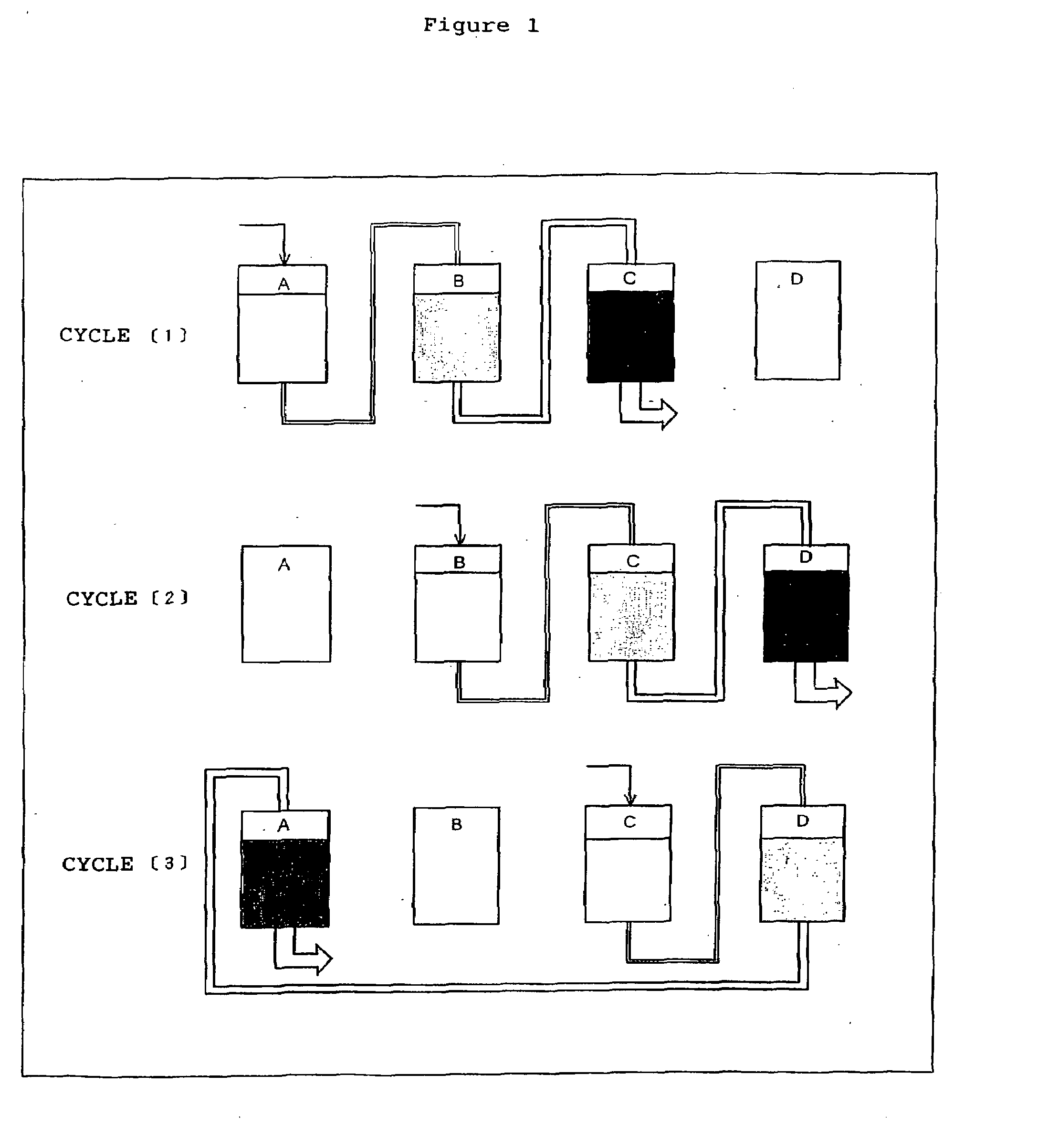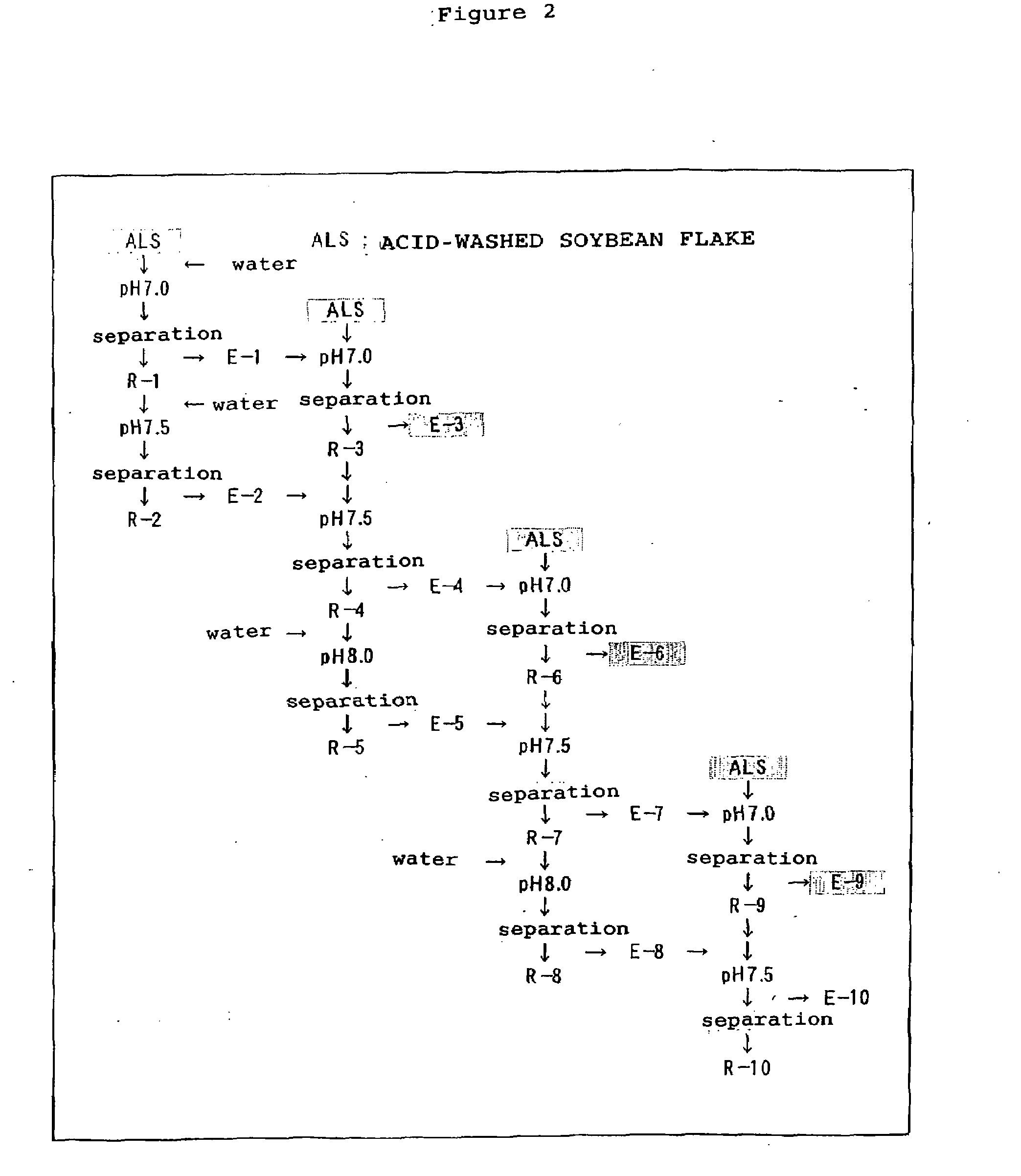Process for producing soy protein
a technology of soy protein and process, which is applied in the field of soy protein, can solve the problems of unsatisfactory taste, and achieve the effects of no bitterness or astringency, no bitterness, and excellent heat gelation properties
- Summary
- Abstract
- Description
- Claims
- Application Information
AI Technical Summary
Benefits of technology
Problems solved by technology
Method used
Image
Examples
example 1-1
Preparation of Acid-Washed Soy Slurry
[0030]2 kg of low-denatured defatted soybean flake having a NSI of 90 was gradually added to 12 kg of warm water at 45° C. having 0.6 g of fatty acid monoglyceride (“Sun Soft O-30”, Taiyo Chemical Co., Ltd.) dispersed therein as an emulsifier. The resultant mixture was gently stirred and washed for 10 minutes while adjusting it to pH 4.2 with hydrochloric acid, and the eluted-whey components were separated by a centrifuge and removed. Thus, 4 kg of acid-washed soybean slurry having a water content of 63% and crude protein content of 66% per solid content was obtained. The slurry was divided into 1 kg-portions and subjected to a three-stage counter-current extraction.
example 1-2
Preparation of Acid-Washed Soy Slurry
[0031]For increasing the whey removal rate, two-stage counter-current extraction for whey washing was carried out. 12 kg of warm water at 45° C. was added to 4 kg of the acid-washed slurry prepared in Example 1-1. The resultant mixture was gently stirred and washed for 10 minutes, and the eluted-whey components were separated by a centrifuge to obtain 12 kg of whey. 0.6 g of fatty acid monoglyceride (“Sun Soft O-30”, Taiyo Chemical Co., Ltd.) was dispersed in the whey as an emulsifier, and 2 kg of low-denatured defatted soybean flake having a NSI of 90 was gradually added to the dispersions. The resultant mixture was gently stirred and washed for 10 minutes while adjusting to pH 4.2 with hydrochloric acid. The eluted whey components were separated by a centrifuge and removed to obtain 4 kg of acid-washed slurry. Next, 12 kg of warm water at 45° C. was added to the slurry. The resultant mixture was gently stirred and washed for 10 minutes, the el...
example 2
Production of Isolated-Soy Protein
[0032]The outline of production of the isolated-soy protein by a pH gradient three-stage counter-current extraction using acid-washed soybean slurry as a soybean raw material is shown in FIG. 2. Counter flow extractions were all carried out at 20° C., solid-liquid separation was carried out by centrifugal separation for 10 minutes at 1500 G, and pH of the extract solution was adjusted using a 20% sodium hydroxide solution.
[0033]Isolated soy protein was produced by pH gradient three-stage counter-current extraction with acid-washed soybean slurries of Examples 1-1 and 1-2. First, 2 kg of water was added to 1 kg of acid-washed soybean slurry of Example 1-1, the resultant mixture was adjusted to pH 7.0, stirred for 30 minutes, and subjected to centrifugal separation. Thus, extraction residue R-1 and 2.0 kg of extract solution E-1 (solid content: 8.0%) were obtained. Next, 2 kg of water was added to the extraction residue R-1, the resultant mixture was...
PUM
| Property | Measurement | Unit |
|---|---|---|
| pH | aaaaa | aaaaa |
| temperature | aaaaa | aaaaa |
| pH | aaaaa | aaaaa |
Abstract
Description
Claims
Application Information
 Login to View More
Login to View More - R&D
- Intellectual Property
- Life Sciences
- Materials
- Tech Scout
- Unparalleled Data Quality
- Higher Quality Content
- 60% Fewer Hallucinations
Browse by: Latest US Patents, China's latest patents, Technical Efficacy Thesaurus, Application Domain, Technology Topic, Popular Technical Reports.
© 2025 PatSnap. All rights reserved.Legal|Privacy policy|Modern Slavery Act Transparency Statement|Sitemap|About US| Contact US: help@patsnap.com



